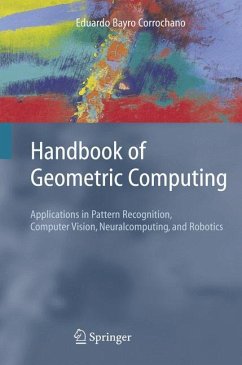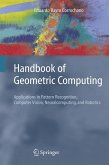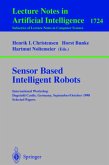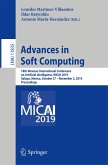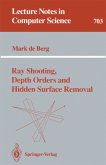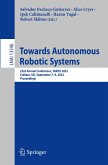This handbook addresses a broad audience of applied mathematicians, physicists, computer scientists, and engineers, bringing together under a single cover the most recent advances in the applications of geometric computing in the most important fields related to building perception action systems: computer vision, robotics, image processing and understanding, pattern recognition, computer graphics, quantum computers, brain theory and neural networks.
Various kinds of problems in these fields have been tackled using promising geometric methods, but such efforts have been mostly confined to specific disciplines. In this book we introduce diverse, powerful geometric methods in a unified manner, covering geometry theory and geometric computing methods related to the design of perception and action systems, intelligent autonomous systems and intelligent machines.
The book is suitable for postgraduate students and researchers working on the design of intelligent systems.
Many computer scientists, engineers, applied mathematicians, and physicists use geometry theory and geometric computing methods in the design of perception-action systems, intelligent autonomous systems, and man-machine interfaces. This handbook brings together the most recent advances in the application of geometric computing for building such systems, with contributions from leading experts in the important fields of neuroscience, neural networks, image processing, pattern recognition, computer vision, uncertainty in geometric computations, conformal computational geometry, computer graphics and visualization, medical imagery, geometry and robotics, and reaching and motion planning. For the first time, the various methods are presented in a comprehensive, unified manner.
This handbook is highly recommended for postgraduate students and researchers working on applications such as automated learning; geometric and fuzzy reasoning; human-like artificial vision; tele-operation; space maneuvering; haptics; rescue robots; man-machine interfaces; tele-immersion; computer- and robotics-aided neurosurgery or orthopedics; the assembly and design of humanoids; and systems for metalevel reasoning.
Various kinds of problems in these fields have been tackled using promising geometric methods, but such efforts have been mostly confined to specific disciplines. In this book we introduce diverse, powerful geometric methods in a unified manner, covering geometry theory and geometric computing methods related to the design of perception and action systems, intelligent autonomous systems and intelligent machines.
The book is suitable for postgraduate students and researchers working on the design of intelligent systems.
Many computer scientists, engineers, applied mathematicians, and physicists use geometry theory and geometric computing methods in the design of perception-action systems, intelligent autonomous systems, and man-machine interfaces. This handbook brings together the most recent advances in the application of geometric computing for building such systems, with contributions from leading experts in the important fields of neuroscience, neural networks, image processing, pattern recognition, computer vision, uncertainty in geometric computations, conformal computational geometry, computer graphics and visualization, medical imagery, geometry and robotics, and reaching and motion planning. For the first time, the various methods are presented in a comprehensive, unified manner.
This handbook is highly recommended for postgraduate students and researchers working on applications such as automated learning; geometric and fuzzy reasoning; human-like artificial vision; tele-operation; space maneuvering; haptics; rescue robots; man-machine interfaces; tele-immersion; computer- and robotics-aided neurosurgery or orthopedics; the assembly and design of humanoids; and systems for metalevel reasoning.
From the reviews:
"The Editor ... has brought together some of the current up-to-date applications of geometric computing with the aim of assisting those who are constructing such systems. This includes not only researchers but also postgraduate students and assistants who are involved in developing and studying such systems. ... a comprehensive list of the applications that would benefit from the contributions in this text which have been prepared by some of the leaders in fields that range from neuroscience and neural networks to medical imagery and robotics." (W. R. Howard, Kybenetes, Vol. 35 (5), 2006)
"The Editor ... has brought together some of the current up-to-date applications of geometric computing with the aim of assisting those who are constructing such systems. This includes not only researchers but also postgraduate students and assistants who are involved in developing and studying such systems. ... a comprehensive list of the applications that would benefit from the contributions in this text which have been prepared by some of the leaders in fields that range from neuroscience and neural networks to medical imagery and robotics." (W. R. Howard, Kybenetes, Vol. 35 (5), 2006)

